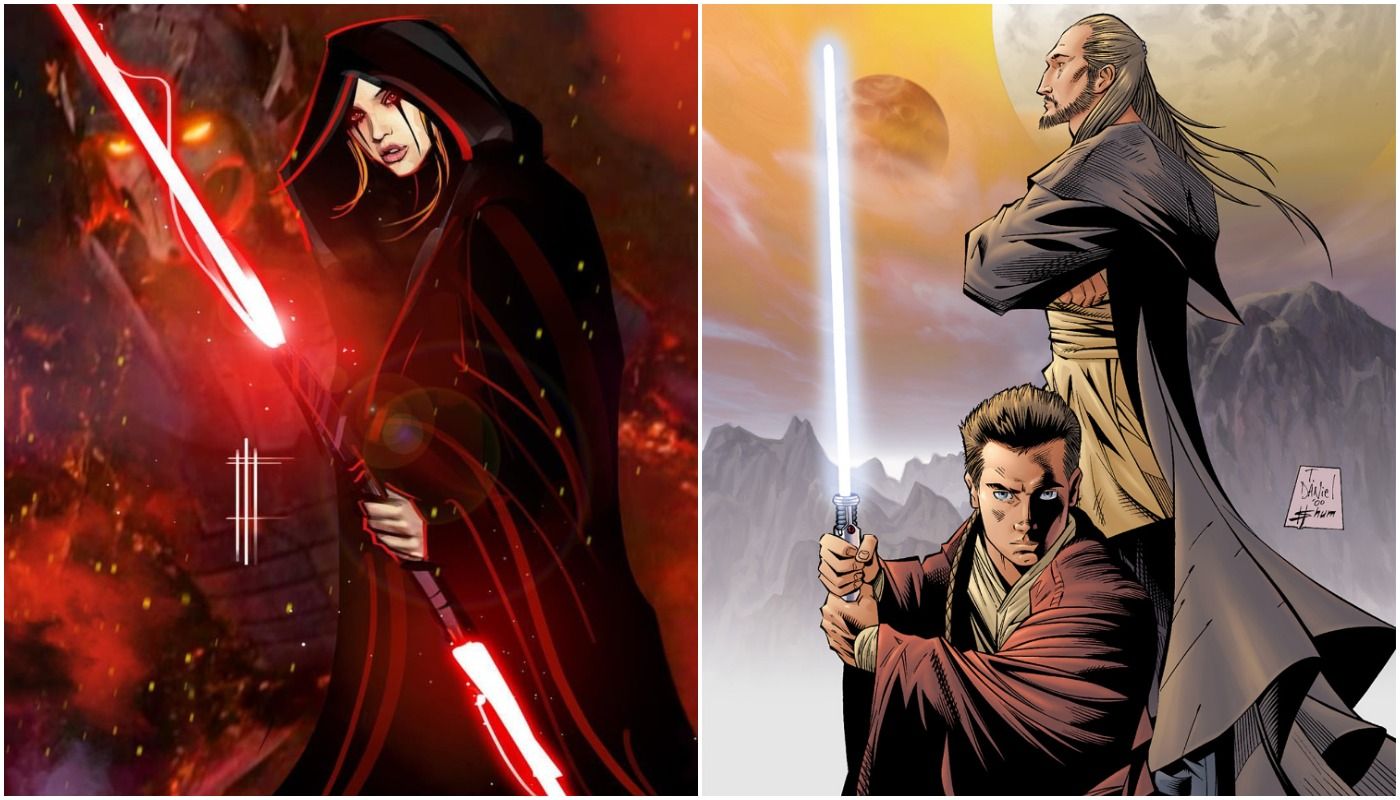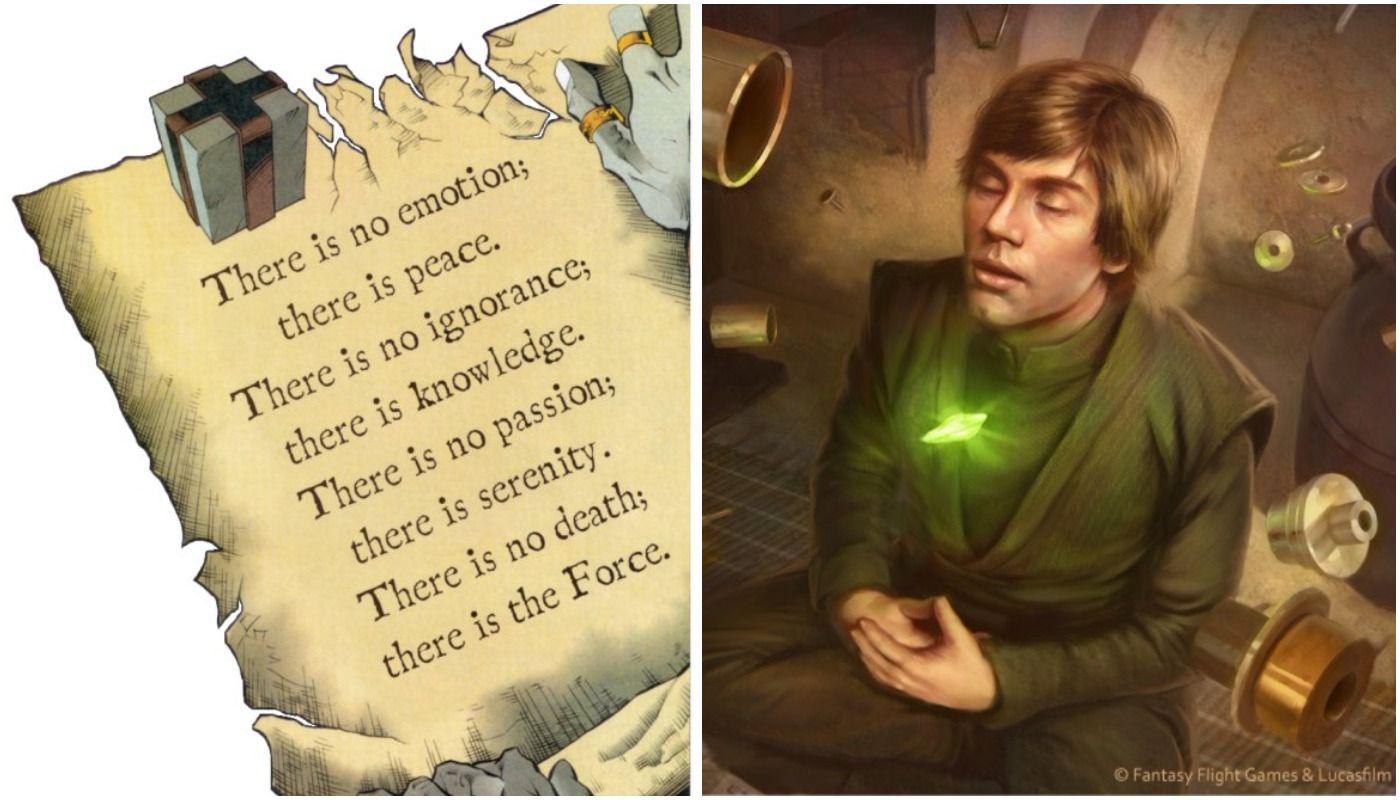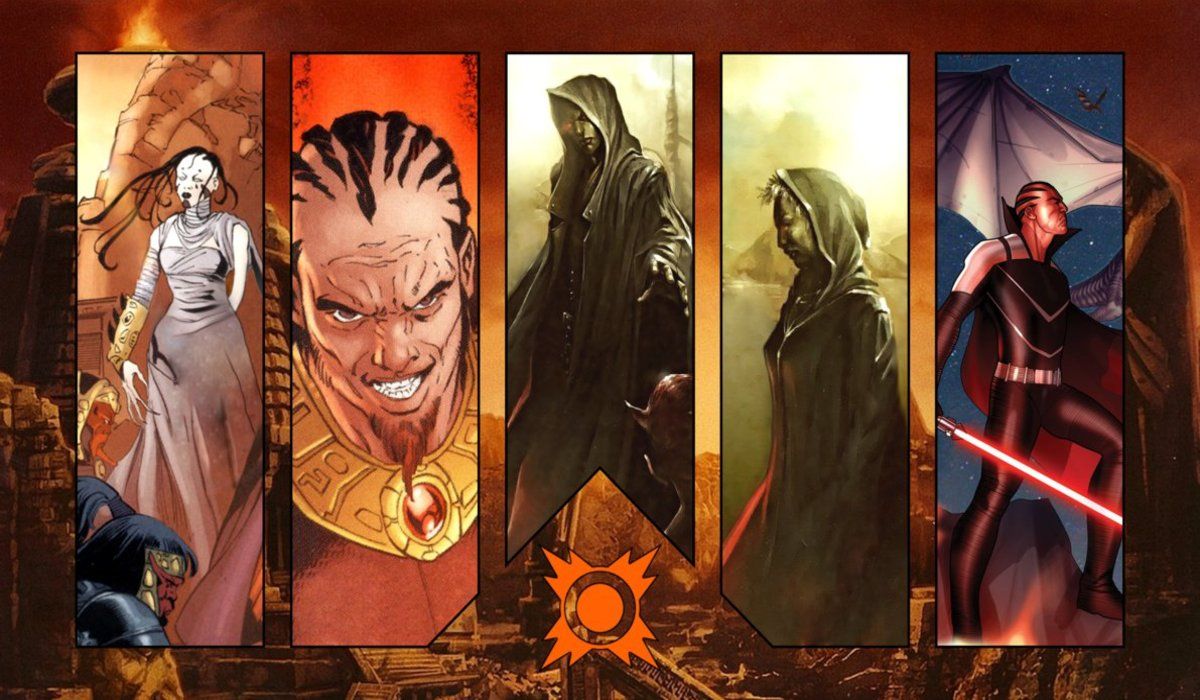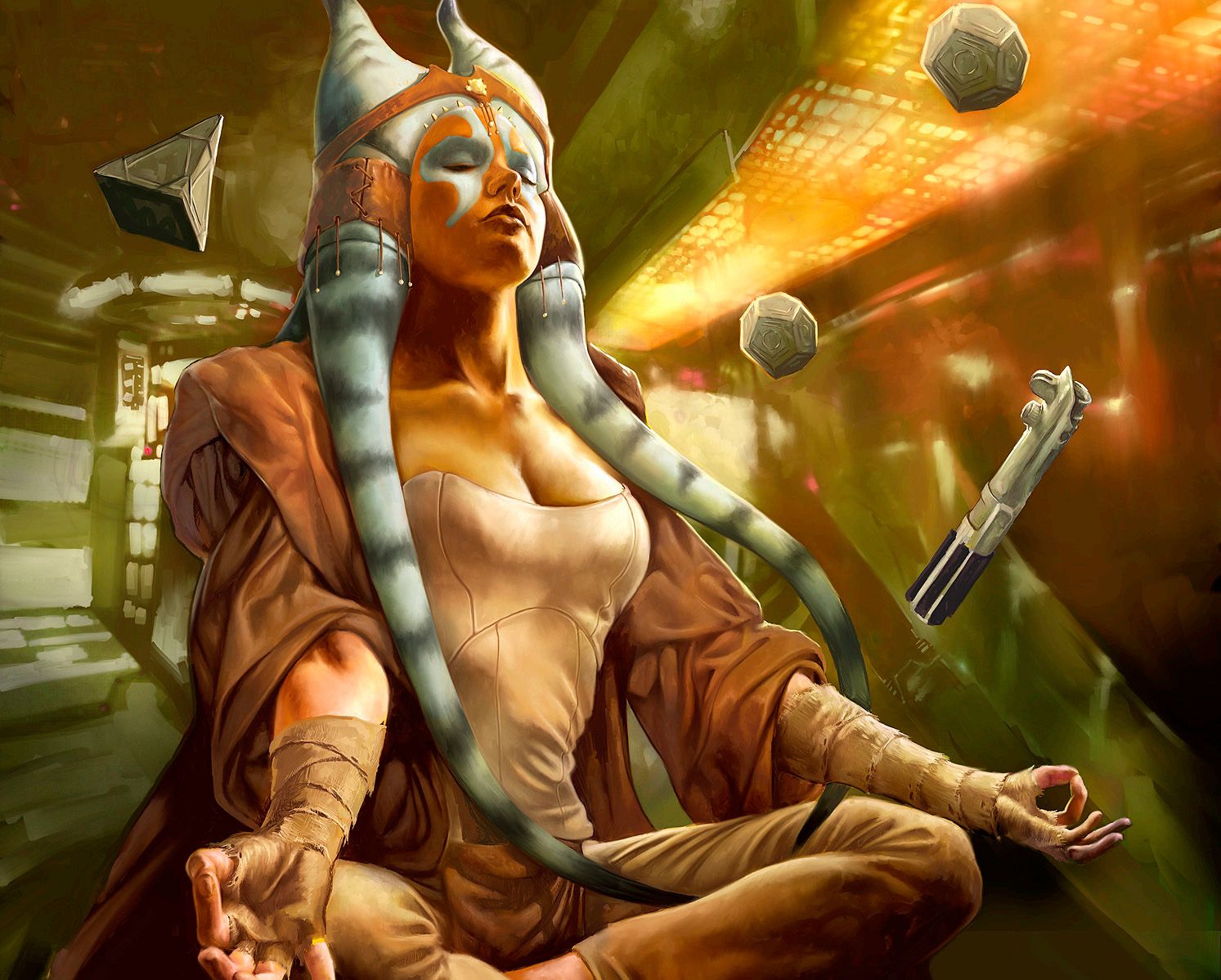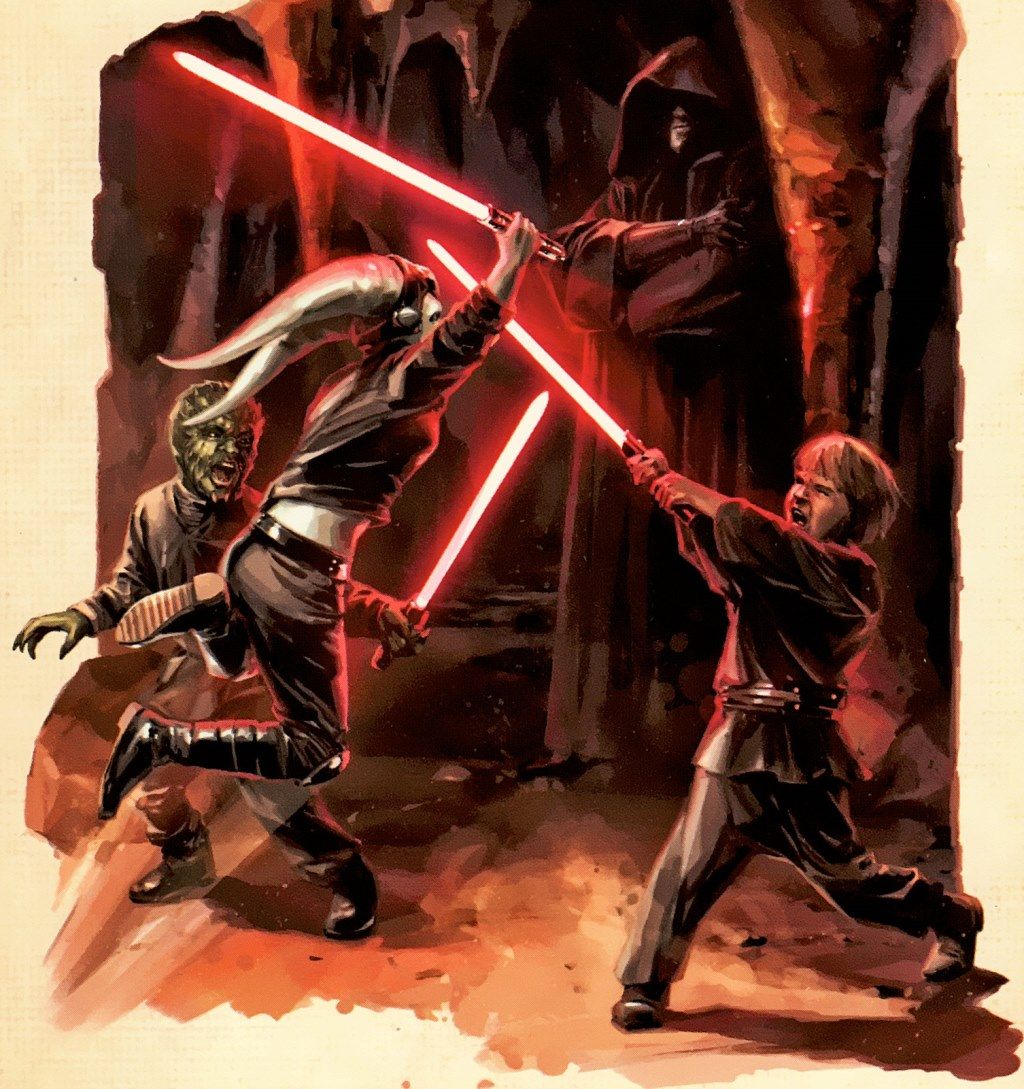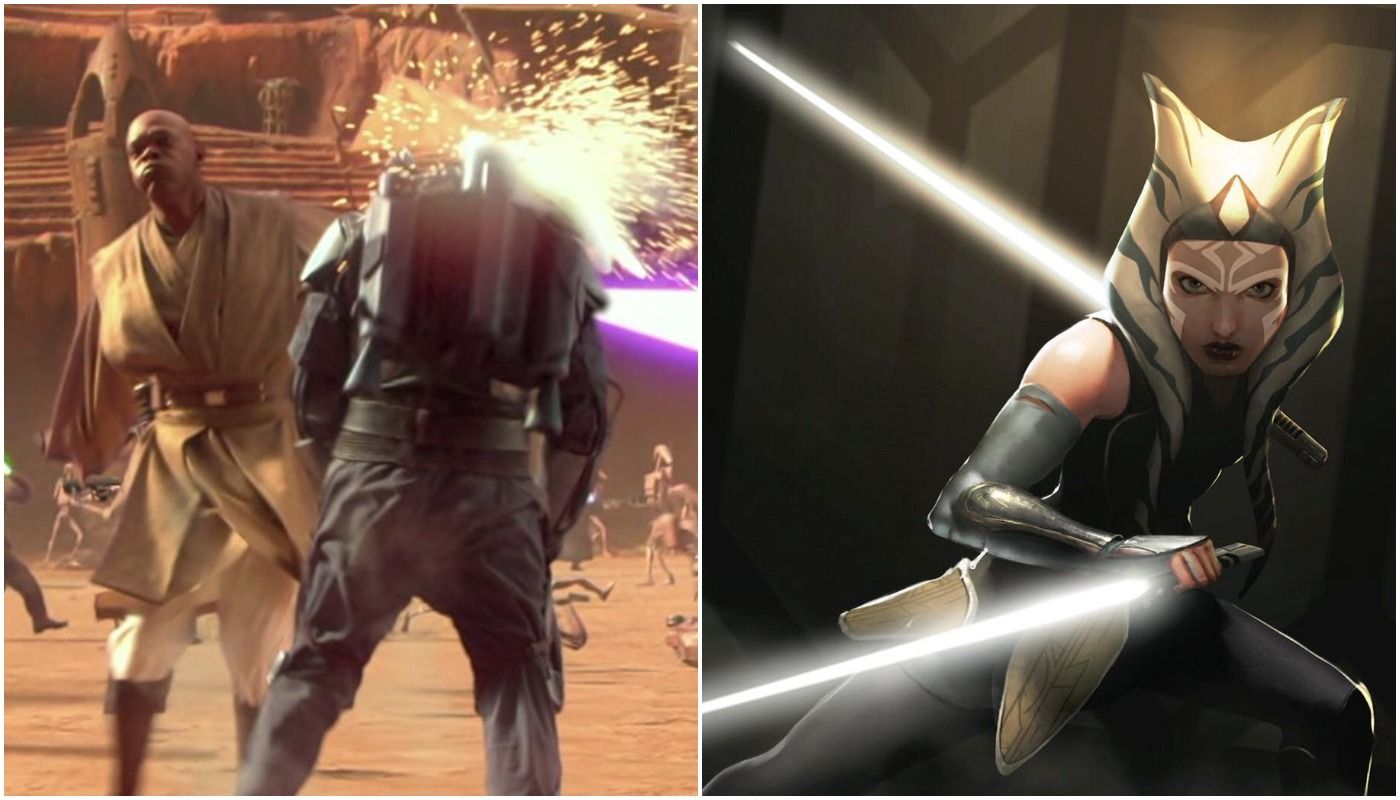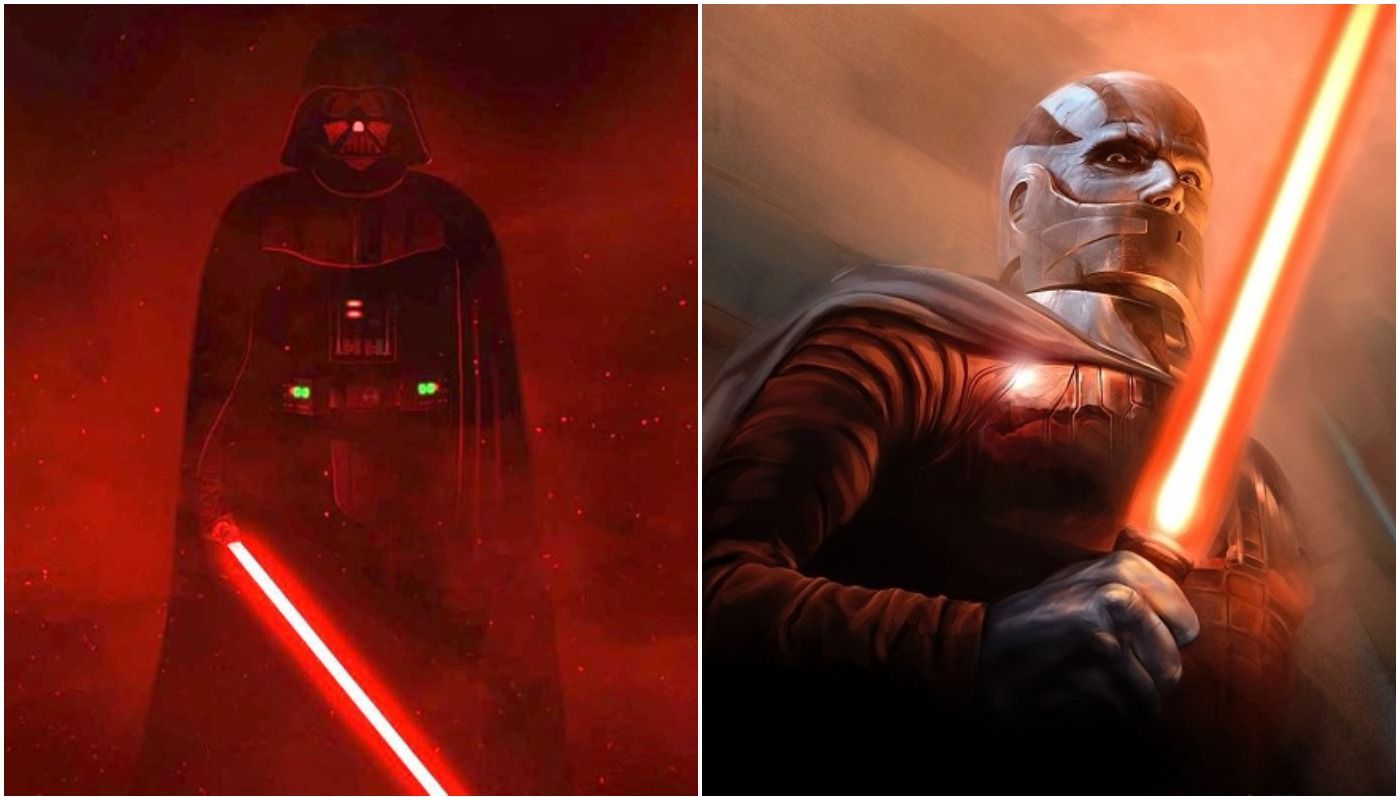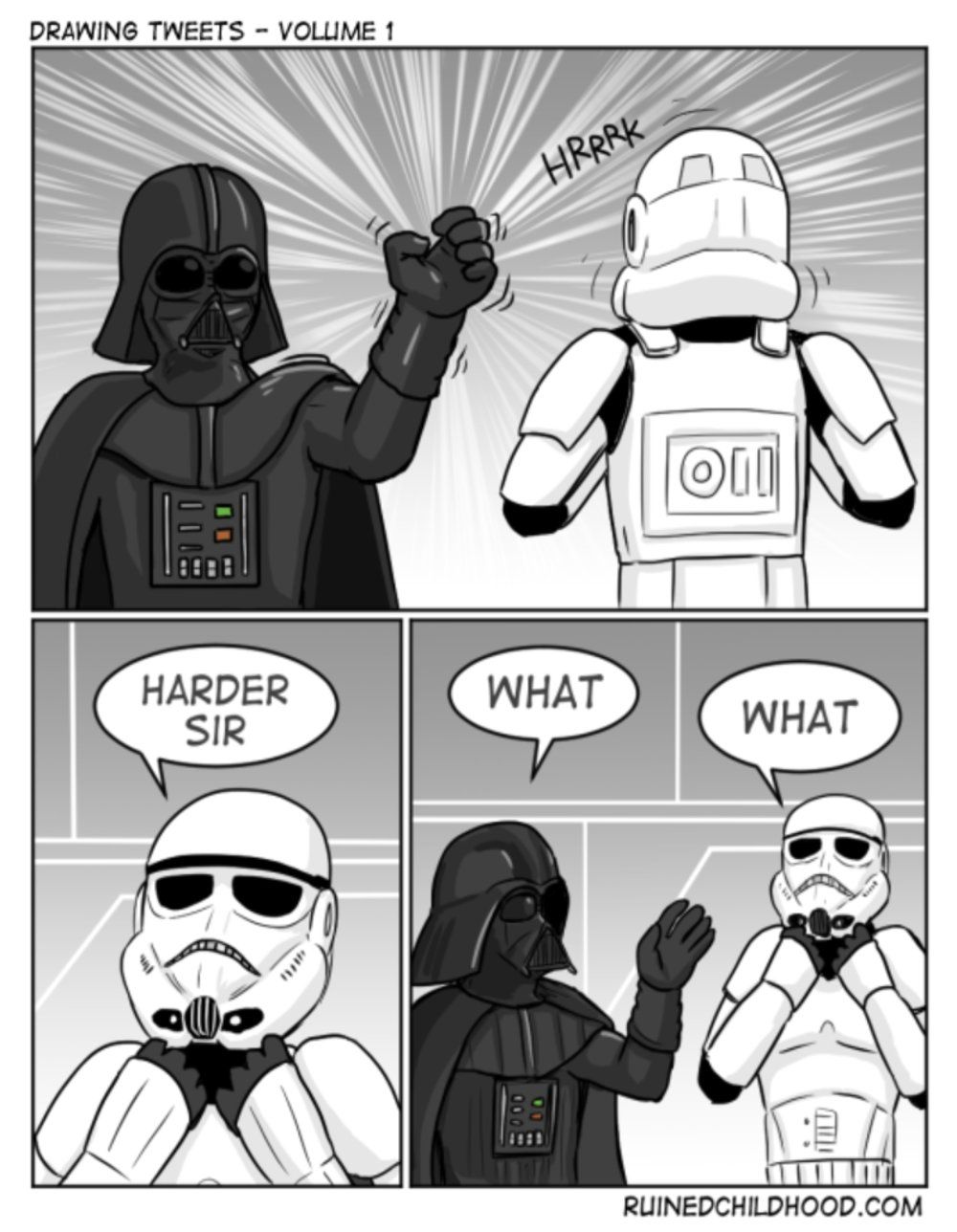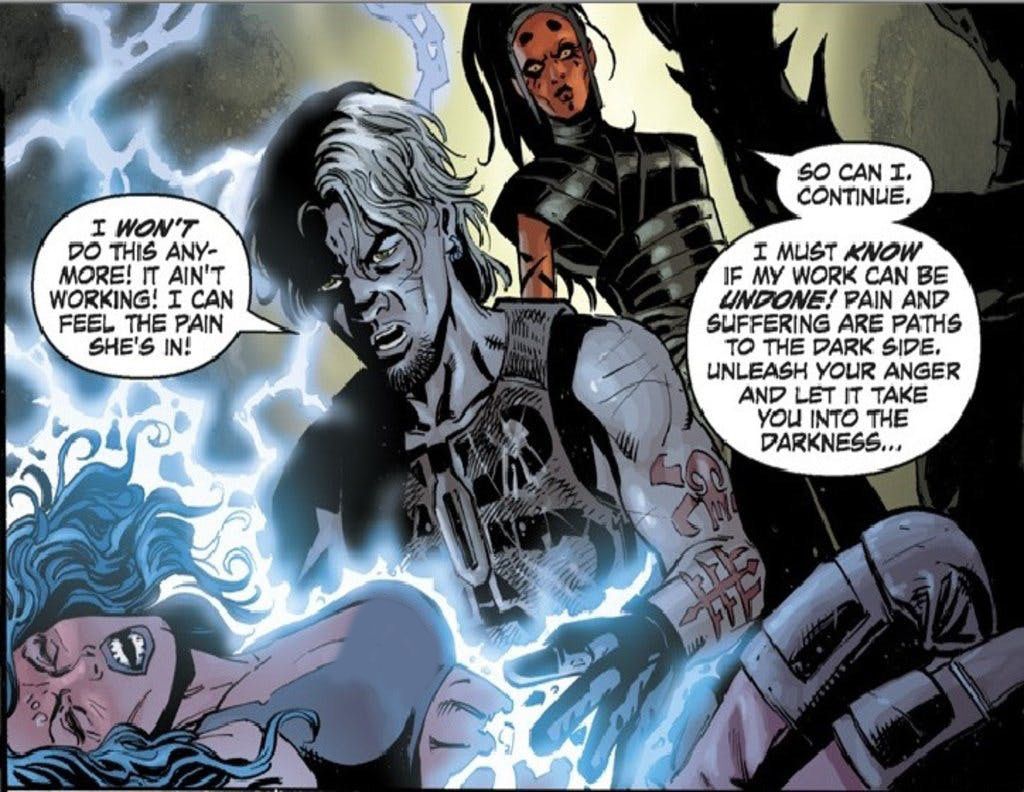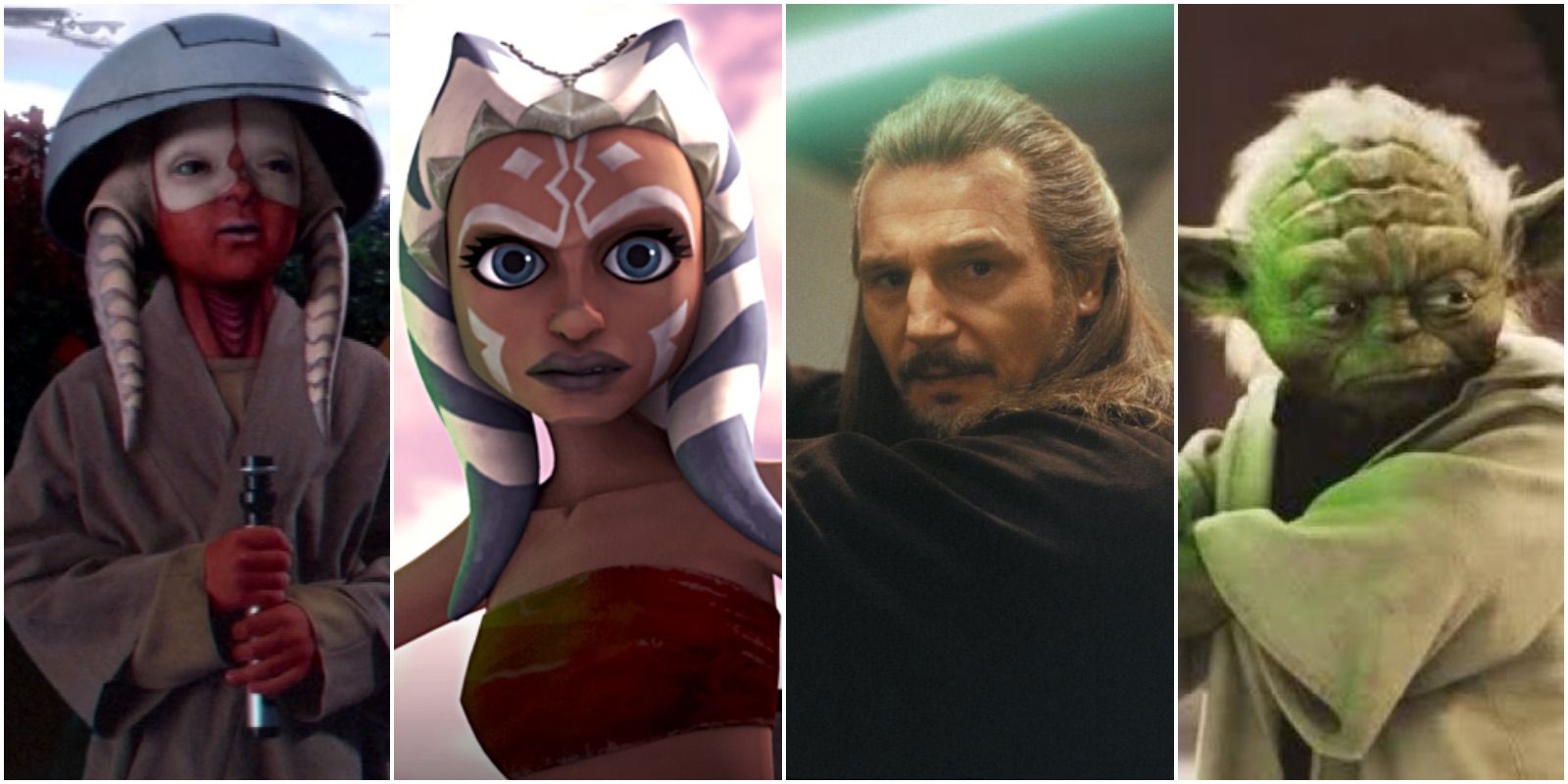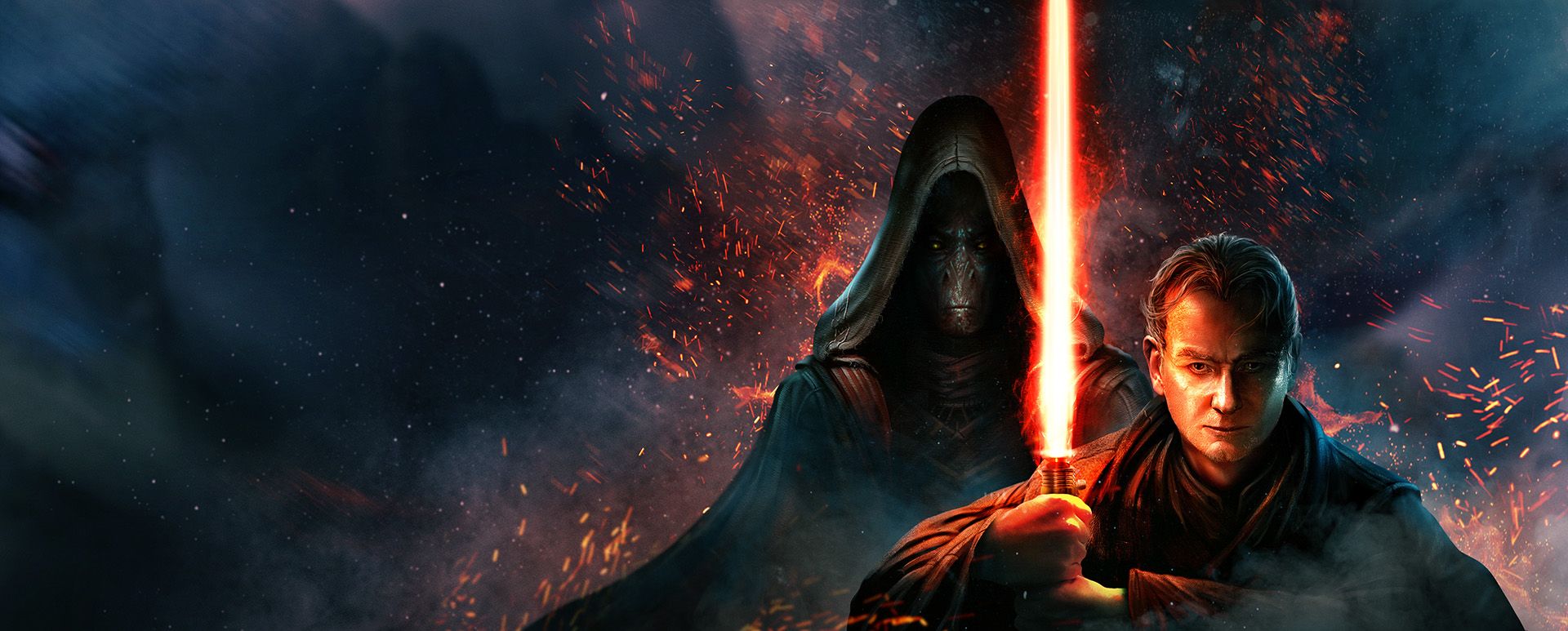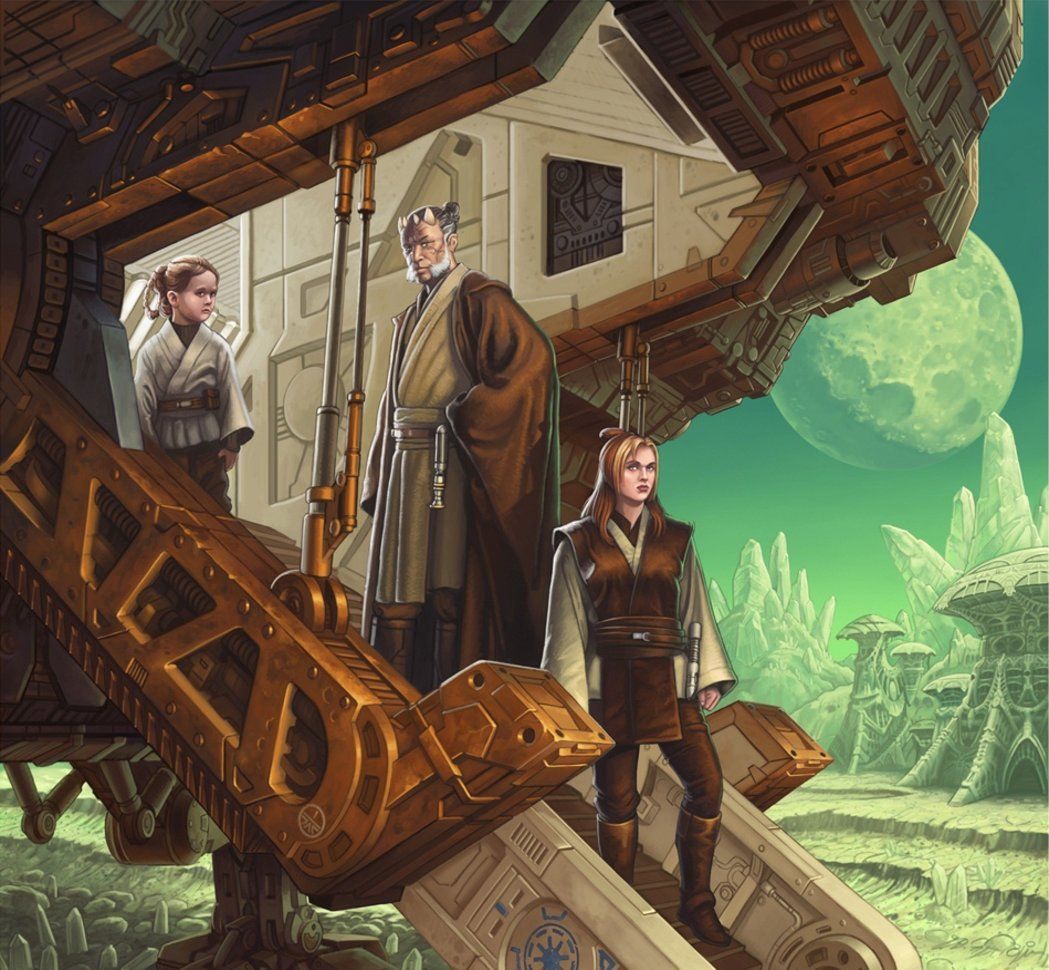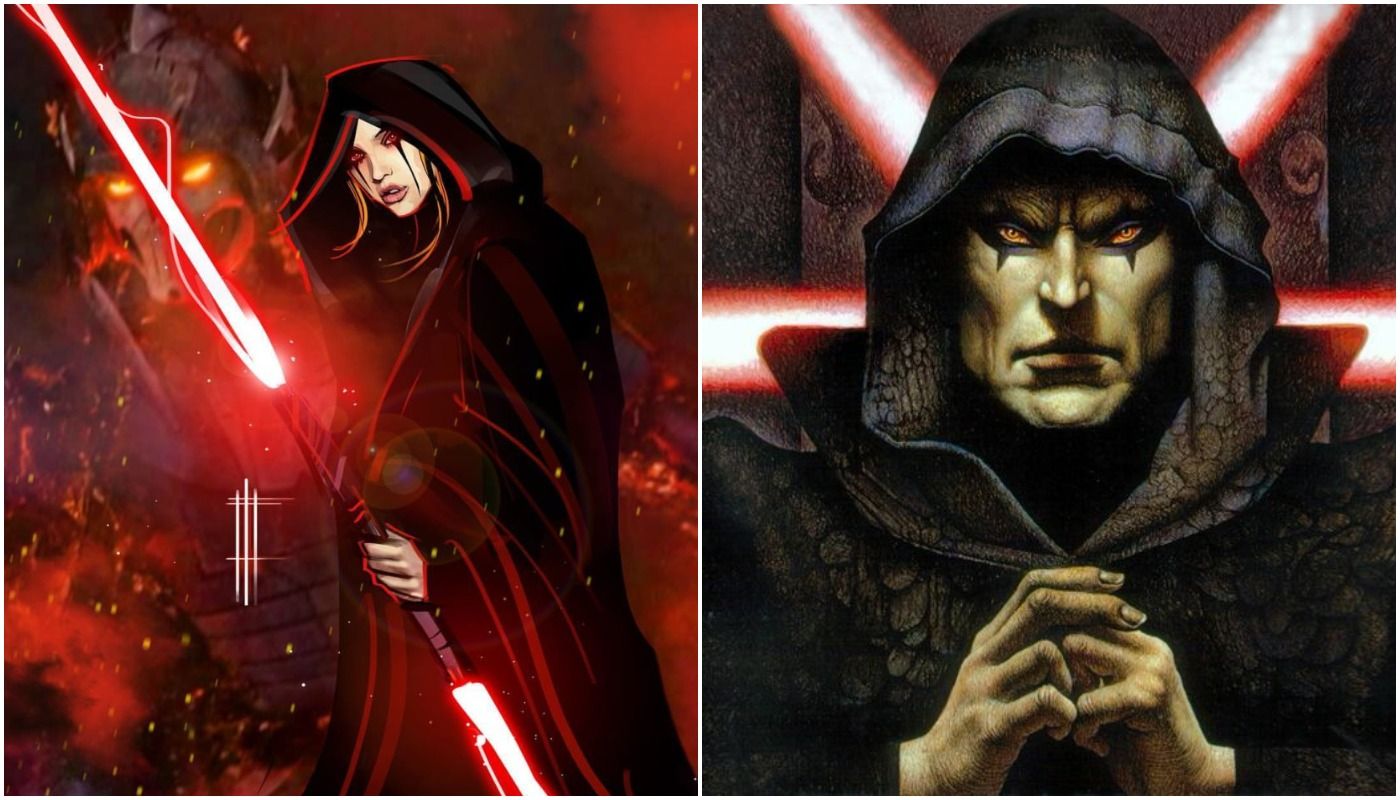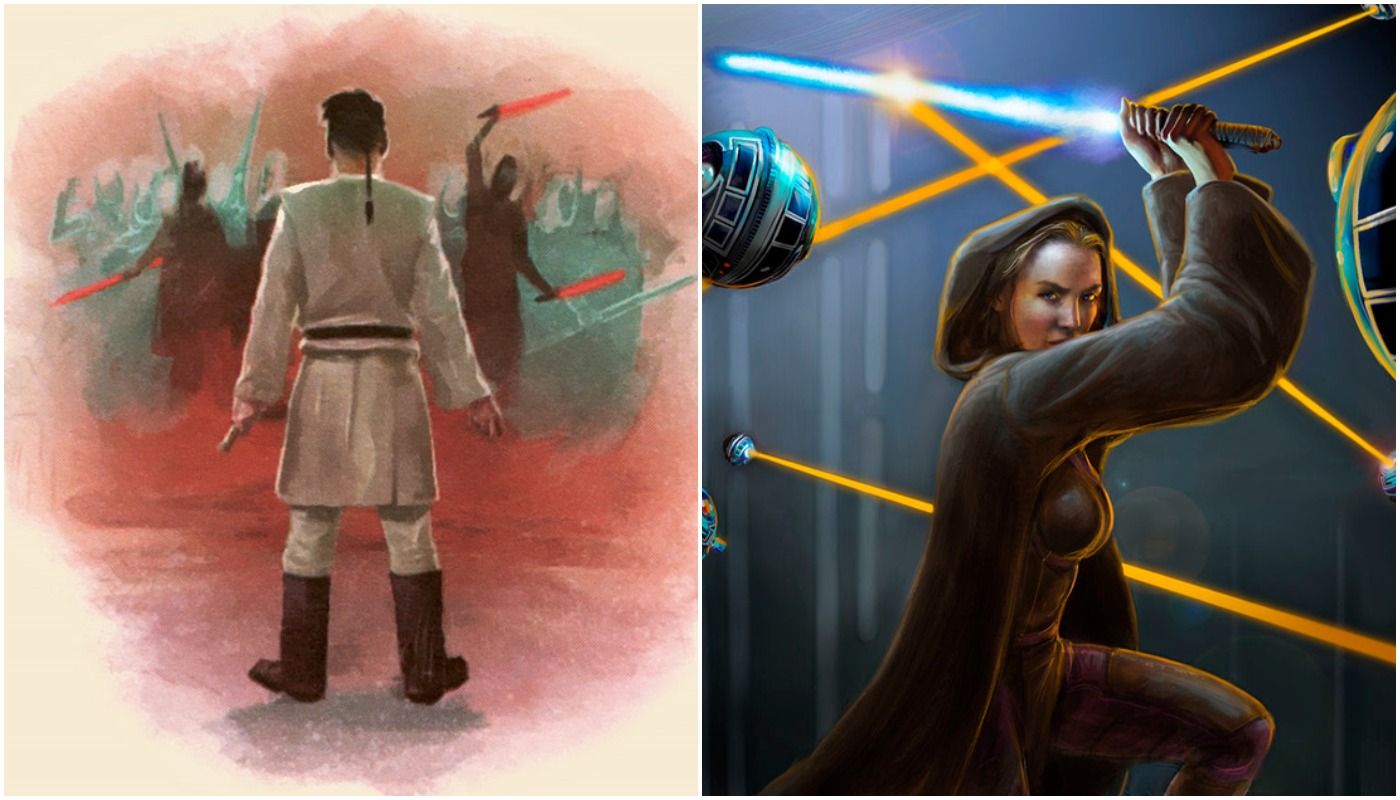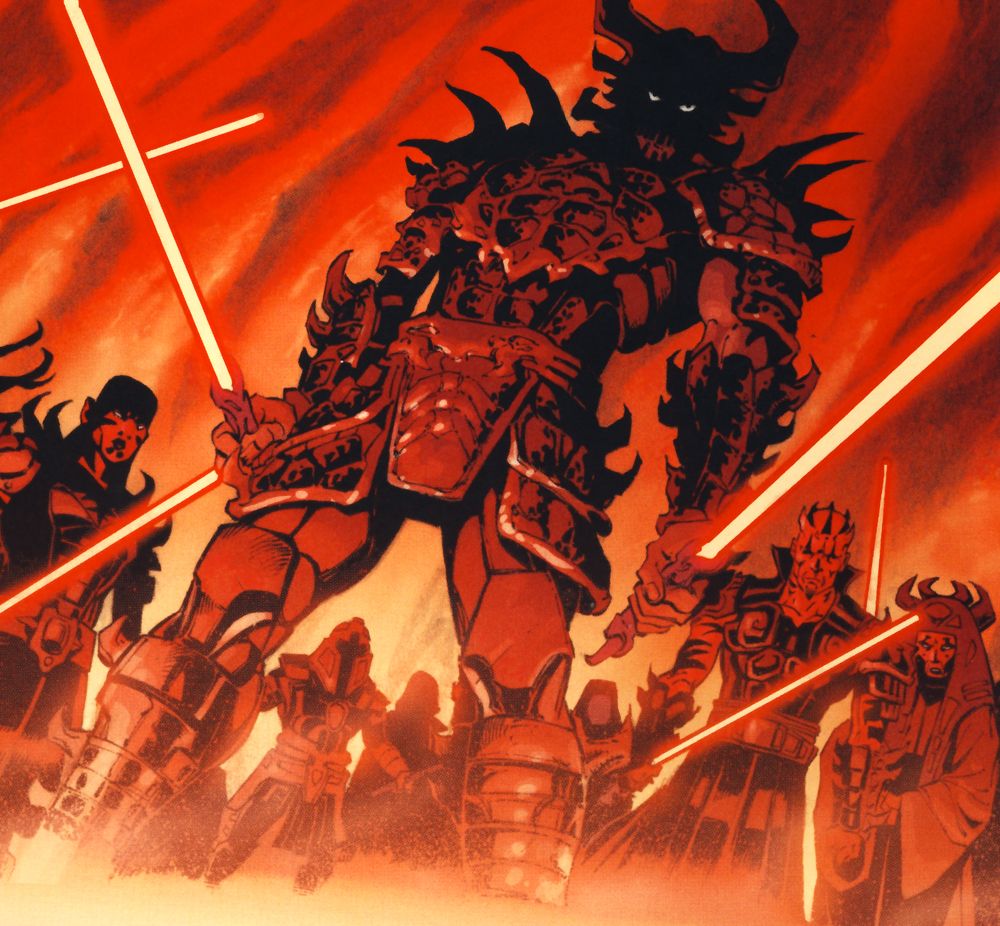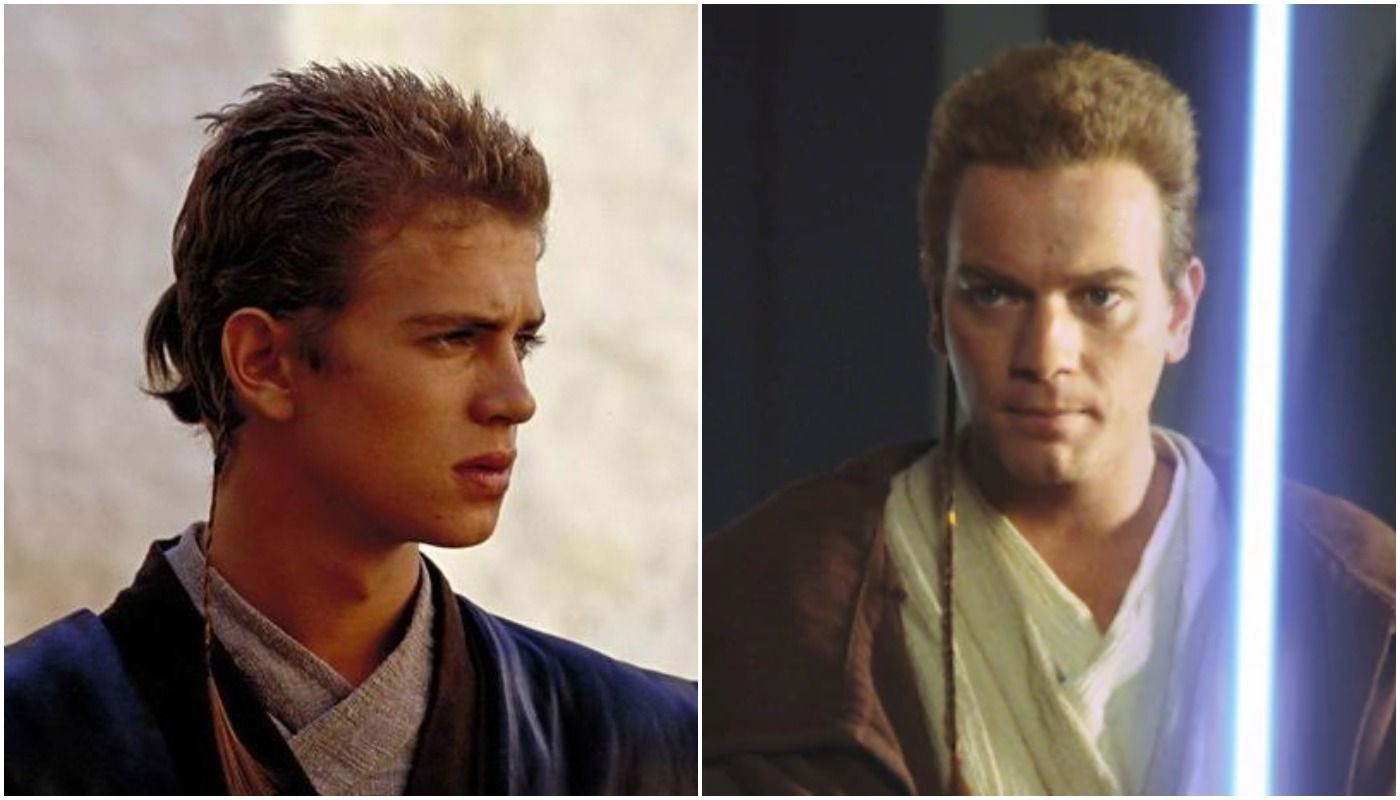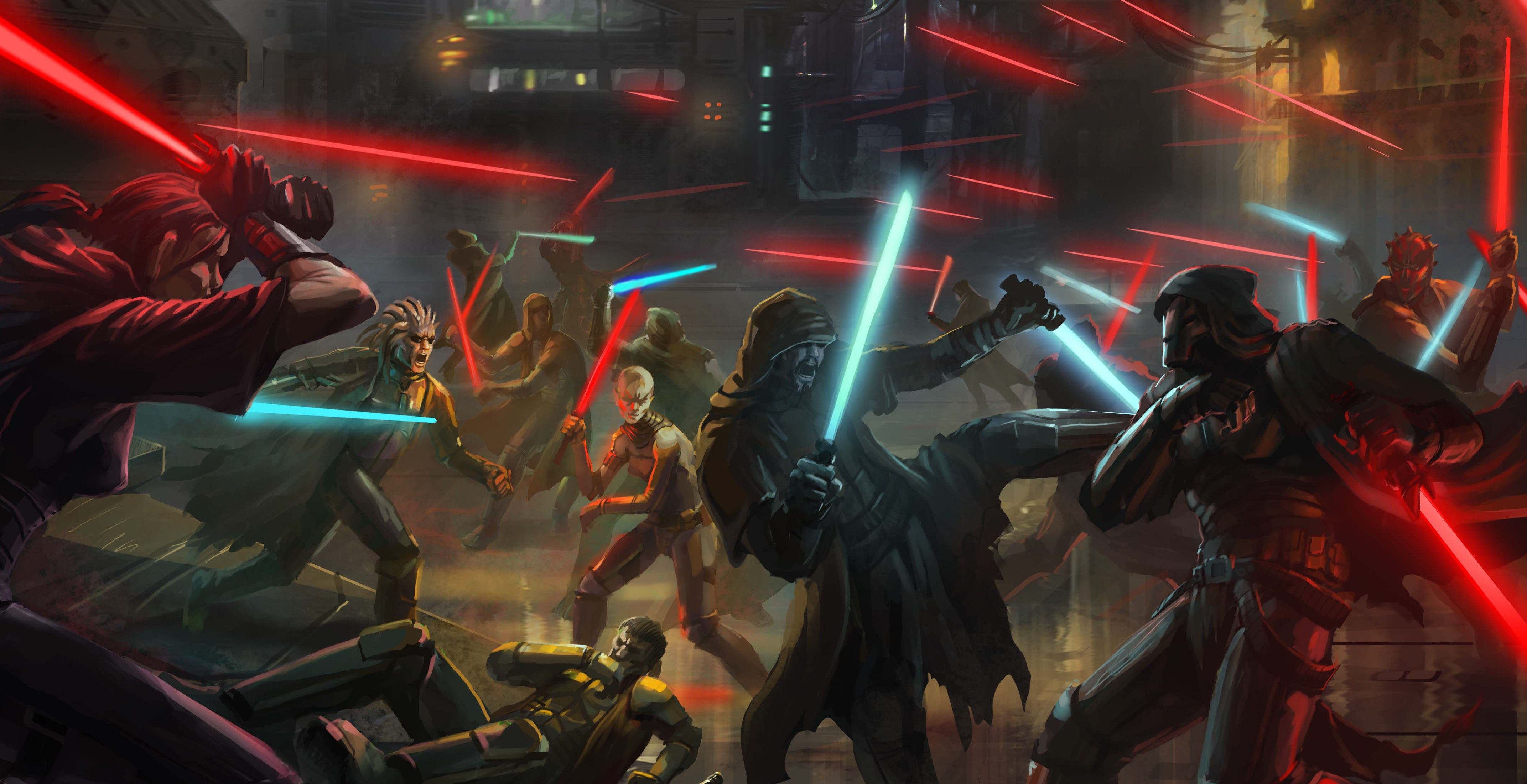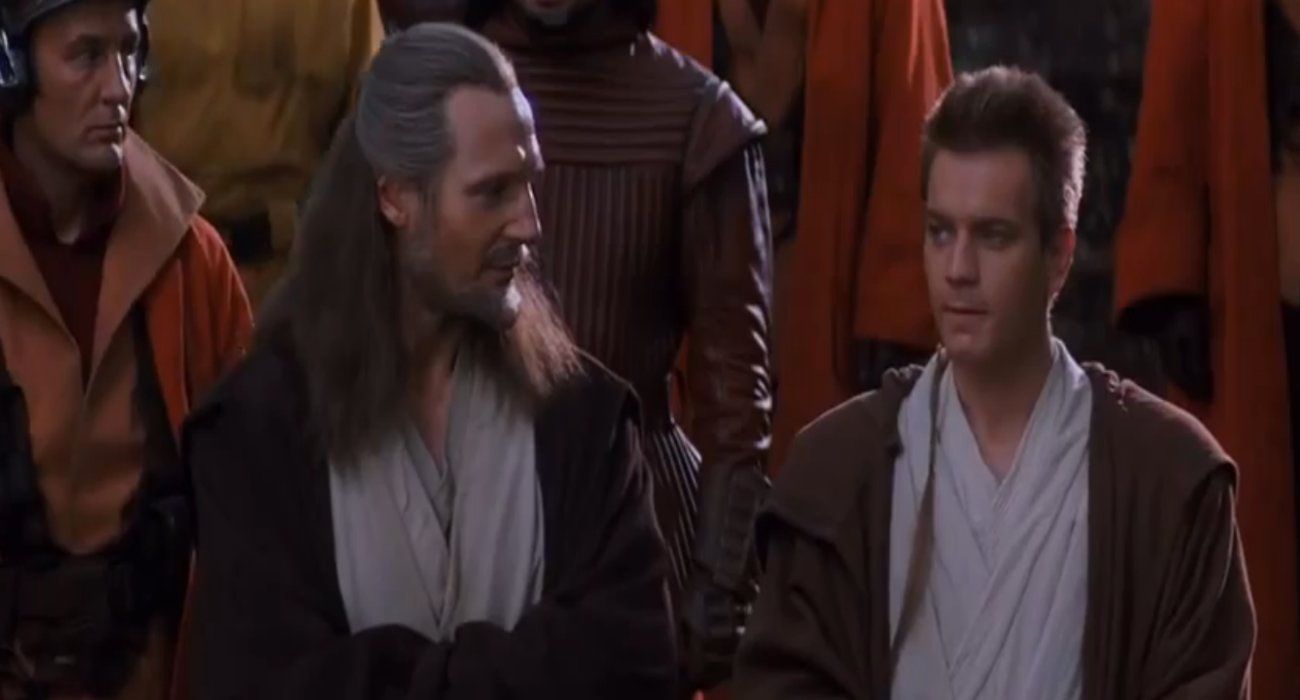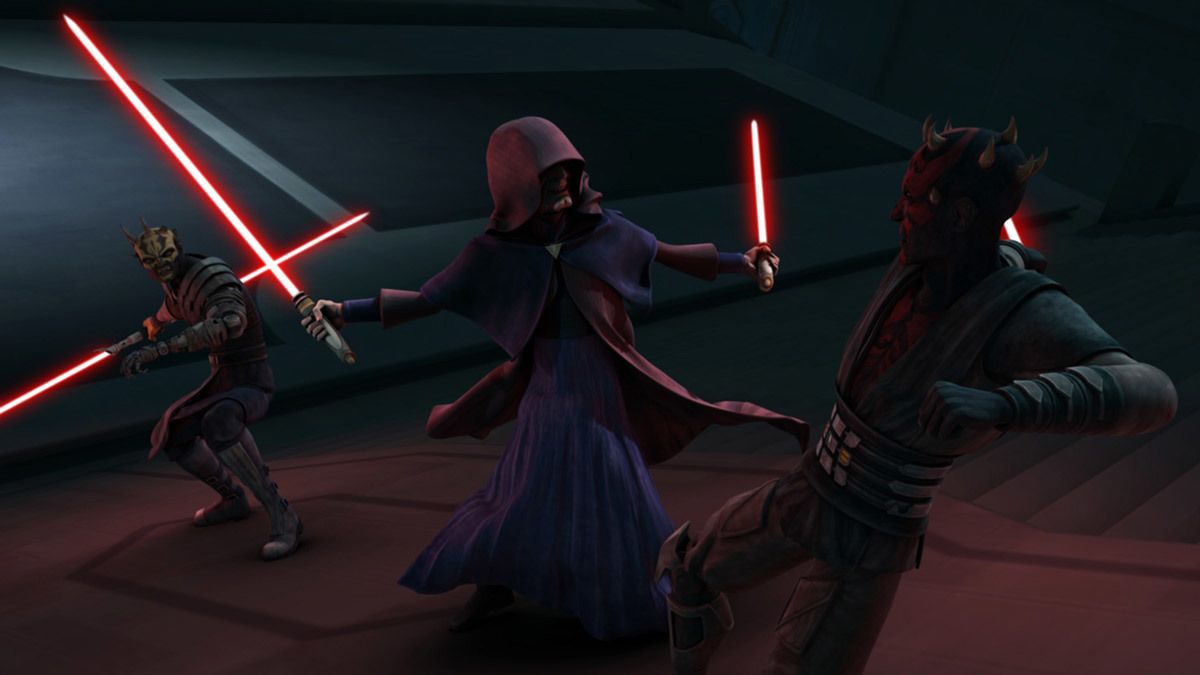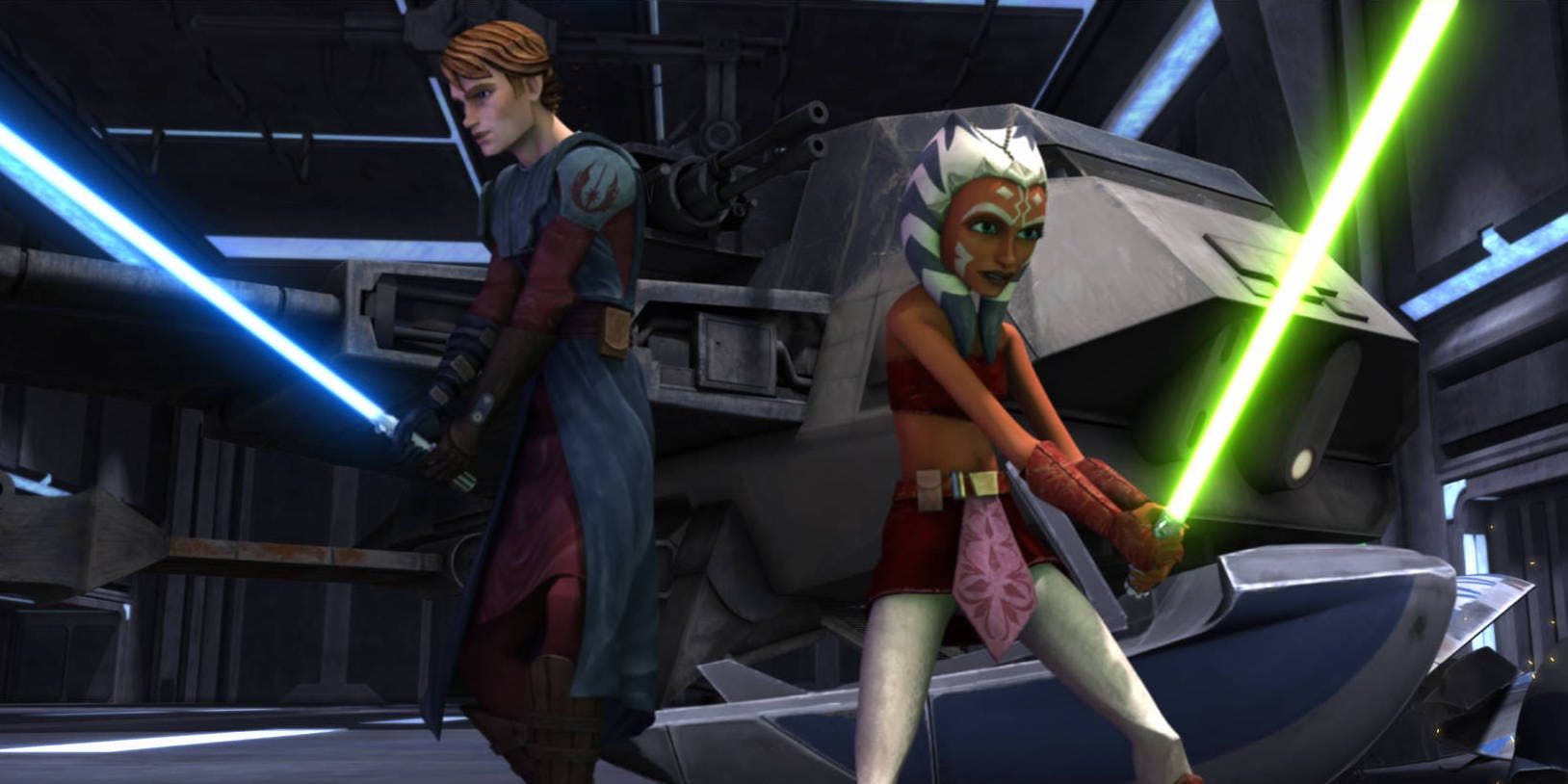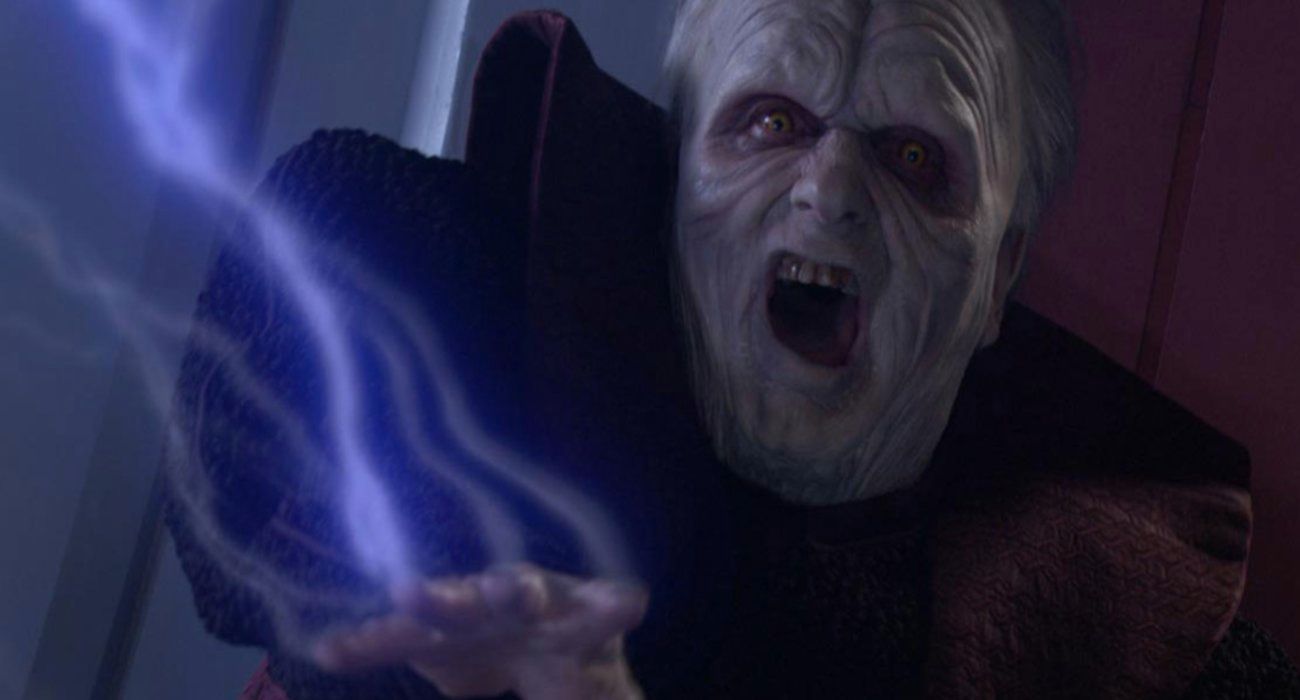The force knows no sense of time. The Jedi and Sith have existed within its confines since creation, interpreting the force to the best of their abilities. Neither side truly understood the force, believing one was more powerful or righteous than the other. One would battle another, powers would rise and fall, and eventually neither would remain in the galaxy.
The core weakness of the Sith and Jedi was their rules. In attempting to create order, structure, and longevity, they failed in achieving their goals. The Sith wanted to rule through domination under one master, while the Jedi wanted to bring peace and servitude towards the galaxy. Neither grasped how their own doctrine and rules were setting them up for failure in the end.
Many of the rules established in this article have been retrieved from the histories of the Jedi and Sith. Some are considered canon, while other parts are not. But as shown in the last few years, just because it's not canon now, doesn’t mean it won’t be in the future. Two main resources were used. The first being a book titled The Jedi Path, and the second being a compilation of Sith History titled Book of the Sith. Each of these books may (or may not) have been included in the books Rey now has in her possession. Whether they are considered canon or not doesn’t matter, as each book sheds light on why the Sith and Jedi did what they did throughout history — providing clarity and insight towards the events taking place in the current Star Wars franchise.
23 Jedi: Five Core Precepts
The original Jedi Code was transcribed by Homonix Rectonia, a member of the Jedi Order during the early Manderon Period. Grand Master Fae Coven would later bring these teachings back to life by writing them in a Jedi trainee guidebook. This book would be passed down from one generation to the next.
The precepts read as such: “There is no emotion, there is only peace — There is no ignorance, there is knowledge — There is no passion, there is serenity — There is no chaos, there is harmony — There is no death, there is the force.”
Qui-Gon Jinn responded to these precepts by saying, “If the living force engenders compassion, eventually even love, I do not feel these are a detriment.” To which Anakin Skywalker is known to have replied, “This is why Qui-Gon was never on the council.”
22 Sith: Code And Prophesy
Exiled following the Hundred Years of Darkness, former Jedi Sorzus Syn and her comrades found themselves living amongst the pureblood Sith as their rulers. In adapting to the Sith ways, Syn penned what she called the Sith Code. Sorzus wrote, “As we build our Empire here on Zoist, our successors will hold true to the Sith Code:
Peace is a lie, there is only passion — Through passion, I gain strength — Through strength, I gain power — Through power, I gain victory — Through victory, my chains are broken — The force shall set me free.”
Much like the Jedi believed in the Chosen One, who would bring balance to the force, the Sith believed in Sith’ari — the perfect Overlord. The prophecy of the Sith’ari is such:
“The Sith’ari will be free of limits, will lead the Sith and destroy them. The Sith’ari will raise the Sith from the beyond and make them stronger than before.”
21 Jedi: Three Pillars Of The Jedi Order
The three pillars encompassed everything a Jedi would do while reinforcing the precepts of the Jedi Code. The three pillars consisted of the force, knowledge, and self-discipline.
Yoda states, “The core of all Jedi, these should be.”
Regarding the first pillar (force) Luke had previously stated: “We must return to the idea of the force as it flows through us, not from us.” Chief Librarian Restelly Quist sums of the knowledge pillar by classifying it into four categories. They were the “history and philosophy of the Jedi Order, physical science, geography, and political structure.
For the Jedi, combat, and self-discipline (third pillar) went together. Meditation was taught to be more important than lightsaber training. Jedi Battlemaster Skarch Vaunk taught “Meditation is the key to aligning your mind and body with the spirit and will of the force.”
20 Sith: The Force Is Venom
Darth Bane, who wrote this Sith saying, felt it summed up the entirety of Sith philosophy. “The force is not fire,” states Bane. “It cannot be passed from one user’s lit torch to another’s, and another’s.” Darth Bane continued by saying, “No, the force is venom. If it is poured into too many cups, it loses its potency and becomes diluted. Yet pour those cups back into a single vessel, and you’ll have power.”
Upon reading these ancient texts, Luke commented that the force was indeed a fire while the Emperor held power. Which is why he adamantly tried to light and pass on the Jedi flame, hoping for the light to spread. As an interesting side note: This is likely where Rian Johnson got the idea of having Luke’s dreams and philosophies crushed through young Ben Solo.
19 Jedi: Lightsaber Combat Forms
The Jedi Order believed in following and teaching 7 specific forms of lightsaber combat. While encouraged to find one’s personal form from these seven, other ways of lightsaber combat were never to be taught. Obi-Wan Kenobi was frustrated by this rule stating:
“Master Windu has developed a variant of Form VII called Vaapad. Qui-Gon won’t let me study it.”
Form one was for padawans, while Form II (Makashi) is a classical style that was also known as the Way of the Ysalamiri. It is often considered the most elegant of the seven forms. Soresu, or Way of the Mynock, is a style which focuses on defense. Form IV (Ataru), or the Way of the Hawk-Bat, is an aggressive style of lightsaber combat which focuses on the offense. Shien/Djem So (fifth form), is a style focused on defending against blaster bolts while attacking at the same time. For VI (Niman), involved using two lightsabers and Juyo (Form VII) is considered the most controversial of them all.
18 Sith: Title Of Darth
Darth Bane felt the title of Darth was imperative for the Sith. To him, it was all about transformation. “When I took my Darth title, I put away my childhood name,” Darth Bane writes in his memoirs. “What does it matter that I was once a miner or a soldier. The only thing that matters is what I will achieve.”
Prior to Darth Bane, the Sith united under kings and rulers. There are several historical references regarding the title of Darth. Some believe it comes from a Rakatan term which means “triumph over death.” It has also been thought to mean Emperor (interesting that Palpatine chose both names for himself) from the word daritha. Darth Bane used the title to highlight the accomplishments of Sith who had bore the name before him, of those who ruled with power and might.
17 Jedi: Altering Abilities
The Jedi Order was very specific regarding which force altering abilities one should use and which ones they shouldn’t. The banned abilities, however, were still used by Jedi under certain circumstances and weren’t drastically different from the abilities on the approved list.
The forbidden force techniques included force grip (a favorite of Darth Vader), force insanity, deadly sight, morichro, and emerald lightning (Darth Sidious’ favorite). Approved abilities included telekinesis, Jedi mind trick, altering the environment, battle meditation, combustion, plant surge, and becoming one with the force which reduces the user to the size of an atom (the art of the small).
Other crazy approved abilities included creating doppelgangers and using the force to open a wormhole in space. Although, the council eventually ruled the last one to be that of the dark side of the force.
16 Sith: Alchemy Enhances The Force
The theology and actions of the Sith regarding Alchemy have been mostly removed from the current Disney canon. But the likelihood of it being returned to the franchise is very much a possibility. Alchemy was looked upon by ancient Sith to enhance the force. Hence, why most Sith red lightsabers were made from artificial crystals (which is canon).
Alchemy was used on the living, deceased, and on objects.
The Jedi Order strongly opposed it with Mace Windu once saying, “The Jedi Order rejects all inquiry into living alchemy, no exceptions. It is an affront to the living force.” Swords became weapons which were stronger than lightsabers, and even Leviathans were created. According to Luke, Leviathan sleepers were still around post Return of the Jedi.
15 Jedi: Structure And Order
The Jedi Order had a clear and precise blueprint, in which all Jedi were bound to serve by. Each Jedi went through four stages. The initiate was for Younglings. Then there’s the Padawan stage followed by Jedi Knight. The highest in the hierarchy being Jedi Master.
With over 10,000 Jedi in the galaxy at any given time, the Jedi Order had become a corporation. But sometimes the rules were broken or bent. Anakin is on record stating if he could skip the Initiate stage why not Padawan too?
The pages in which the Structure of the Jedi Order is written, also contained notes from other Jedi, trash-talking one another about the game of Smashball. Which goes to show how seriously they took these rules.
14 Sith: Operating From The Shadows
The Sith originally operated in plain sight of the Jedi and galaxy. Darth Bane changed this, due to his philosophy that a great army in plain site will only invite a legion of enemies. The idea of operating in secrecy allowed the rest of the galaxy to think the Sith were nothing more than creatures from cantina stories of old.
Darth Banes rule was very clear: “We must not make our presence known.”
He even stated that “if there should exist a being who is aware of the Sith, eliminate them immediately.” Luke was documented in saying the idea of Sith being in hiding, even after the victory over Sidious, scared him. It took hundreds of years before a Jedi caught wind of a possible Sith, and another 100 years before every Jedi believed it (Darth Maul).
13 Jedi: The Reassignment Council
Hidden within the infrastructure of the Jedi Order was a place for those who were deemed unfit, or unchosen, to be a Padawan. Standing by the Jedi Code of assisting the Republic in every possible way, these young force-users were transitioned over to the Jedi Service Corps via the Reassignment Council. The Service Corps consisted of those who would serve in the agricultural, medical, educational, and exploration branches of the Jedi Order. The system sounds nice, but it also had its flaws.
Obi-Wan Kenobi almost didn’t become a Padawan.
Meaning Kenobi would have transitioned into the Service Corps. He once wrote in response to almost joining the Corps, “I was lucky to have saved Qui-Gon on Bandameer and get a second chance (being a Jedi Knight).”
12 Sith: Master And Apprentice
Darth Bane wiped out all existing Sith (and many Jedi) during the battle of Ruusan. Darth Zannah and Bane were the only ones left, apprentice and master. Darth Bane put these events into motion, allowing the Jedi Order to think they had foolishly wiped the Sith from the face of the galaxy forever.
One Sith must contain all the power of the dark side. One master must decide how that power is used.
This was Darth Banes Rule of Two. As he states, “sharing power is an act of weakness and a violation of the Sith Code.” According to Bane, the master is to instruct a worthy apprentice while never giving them a sliver of power. The concept is that the apprentice must eliminate the master when they become strong enough. Only through this process can the true power of the dark side be passed on from generation to generation.
11 Jedi: The Trials
The Jedi Order implemented a series of unbiased tests to help the council and master determine if a Padawan was ready to become a Knight. These tests were known as the Jedi Trials and contained 5 separate stages that could be taken separately or all at one time. The five tests were skill, courage, spirit, flesh, and insight.
Passing the Jedi Trials did not guarantee a Padawan would become a Jedi Knight.
The council has final say over everything. As Palpatine once noted, this way of thinking called out the Jedi on their “typical arrogance.” How one passed the tests would also change depending on the climate. During The Clone Wars, many Padawan’s earned their Jedi Knight title by surviving a battle or after receiving a serious wound. Palpatine again commented on this saying, “overconfident Jedi are easy to eliminate.”
10 Sith: Extension Of Power
The Sith believed the lightsaber to be a true extension of their power, especially after the Sith alchemist were lost to history. The Jedi use the lightsaber as an extension of themselves too, but in a much different way than the Sith.
“A lightsaber is a limb that requires no conscious thought to move or position. Losing a lightsaber should feel like an amputation.”
The Sith also believed that artificial crystals held more power than the organic ones Jedi mined. As a rule, raw elements were to be cooked in a furnace while being forged in meditation through the dark side of the force. The only downfall to this rule was that the lightsaber blade was only as strong as the one who created the crystal. During the Emperor's reign, the inquisitors and weaker apprentices were often beaten by rogue survivors of Order 66.
9 Jedi: Public Image
The Jedi Order felt its purpose was to support the Republic while basically policing the galaxy. Having a strong public presence was very important to them, resulting in some weird rules. A Padawan was to keep their hair short and trimmed while displaying a single braid. This was to let the public know they were a Jedi, but one in training, not a master.
Clothing worn consisted of plain robes and undergarments while wearing a utility belt which harnessed items such as a commlink, grappling hook, aquatic breather, image caster, and beacon transceiver.
Jedi Knights, Service Corp, and Padawans were restricted from entering or going near cantinas and spice dens (which explains why the Jedi were ignorant to many of the moves the Sith were making behind the scenes).
8 Sith: Hate Equals Form
The Jedi relied on Form techniques to expand and harness their power in battle, but the Sith taught no such form was necessary. The only ingredient required for a Sith in battle was hate and anger. To the Sith, training in how to use a lightsaber in which aggression wasn’t channeled was a waste of time.
The Sith rule for lightsaber combat was strong and fast.
Strength being the more dominant of the two. But even Darth Bane recognized the weakness in relying on only those two styles. If an opponent was not taken down quickly, weaknesses were quickly exposed. This led to the development of Vaapad style (Mace Windu used this). Vaapad relies on emotion, not strength to conquer and become victorious.
7 Jedi: Role Of The Padawan
The role of the Padawan was simple, learn by experience. In being paired with a Master, the young Jedi was supposed to focus on themselves, learning how to serve the Republic according to their strengths and weaknesses. This didn’t always work towards the Padawan’s advantage.
“I don’t know if I’m making a connection with Qui-Gon,” Obi-Wan Kenobi wrote in frustration. “He’s so hard to read and the missions are far beyond what I was prepared for.”
Some Padawan were paired with master’s who didn’t share the same language. Yet a Padawan was required to do what was asked of them always. Yoda has mentioned that the Padawan stage is likely the most challenging and difficult of all the Jedi stages. He notes that the expectations far exceed what any Padawan might have expected.
6 Sith: Lineage Is A Must
Due to the Rule of Two, a Sith Master must choose an Apprentice who will one day succeed them by means of elimination. According to Darth Bane, “the Sith Order is a lineage. It must not end with one Master as a successor must be chosen. In other words, one was to choose who would one day end their life.
Darth Sidious changed this rule, refusing to pick a successor.
He believed all his Apprentices were merely tools doing his bidding and that he alone would live forever while reigning over the galaxy. The Sith Apprentice was deemed to grow stronger than the Master, hence strengthening the Sith line over generations. As Bane states, “A proper Apprentice will ensure that the Sith endure.”
5 Jedi: Master And Apprentice
Much changed in the Jedi Order during war times, like Anakin getting Ahsoka as a Padawan. The old rules stated a Padawan was to be chosen by a Jedi Master. Ways in which a potential Padawan could get noticed was through completing the Initiate Trials while also competing in an Apprentice Tournament.
Under normal circumstances, the council does not intervene with whom some Master chooses for an Apprentice. Unless a Jedi Seer witnesses a vision regarding a Youngling. Not all Jedi were combatants prior to the war as most resolved political disputes or served in non-violent capacities.
A simple rule existed between Master and Apprentice: “Listen to your Master’s teachings even when they seem contrary to what was learned at the Temple.” But remember, the Jedi Council has final say over everything.
4 Sith: Absolute Power
Despite all the rules set by Darth Bane, Darth Sidious decided to write his own set of rules according to him titled Absolute Power. Yet, because he failed to acknowledge what Bane had set in motion, his elimination by Darth Vader’s sacrifice ended the lineage of the Sith.
Darth Sidious assumed he would conquer life and never cease to live for all eternity.
His pride, like that of the Sith of old, got the better of him and brought the Sith ways crashing down. He assumed his ways were perfect yet couldn’t seem to instill those ideas fully amongst those who were in his ranks.
“So simple in concept, yet I am bound by the incompetence of others,” states Darth Sidious. “I trust that my commanders will stifle dissent, but frequently it grows louder. If I had not seen my eternal triumph, I might be troubled.”

